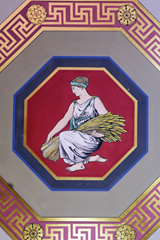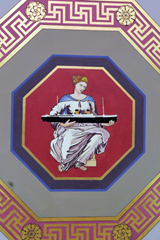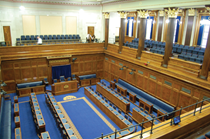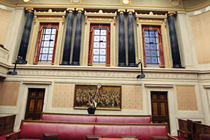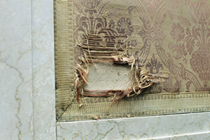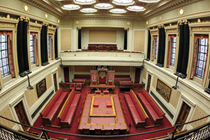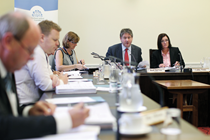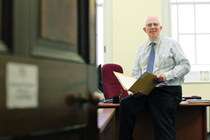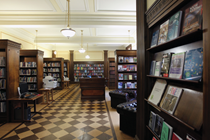A photographic tour of Stormont
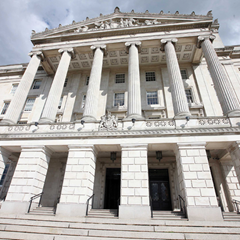 Peter Cheney looks behind the scenes at Parliament Buildings, where the work of today’s politicians is surrounded by history.
Peter Cheney looks behind the scenes at Parliament Buildings, where the work of today’s politicians is surrounded by history.
As the new Assembly session got under way, agendaNi explored some of the better and lesser known parts of Parliament Buildings.
Built between 1928 and 1932, the Assembly’s home initially symbolised unionist rule over Northern Ireland and has witnessed the shifts in political power throughout the province’s troubled history. With brief interruptions, it was vacated by politicians during the Troubles with civil servants replacing them for the best part of 40 years.
Now, after the twists and turns of the peace process, a devolved and shared government is firmly established and the processes of democracy are taking place in Parliament Buildings each working day. For all its faults, the Assembly represents the people of Northern Ireland and holds ministers and officials alike to account.
In its more famous and historic moments, presidents, prime ministers and monarchs have walked up its steps and addressed its elected members. These are quieter days, with MLAs getting to grips with the increasingly challenging demands of governing Northern Ireland.
Employment and Learning Committee members prepare to question Minister Stephen Farry in Room 29. The library (directly behind the Great Hall stairs) is now a fairly confined space after an annexe was converted into a committee room. Accommodating the 18 committees is difficult but also essential as they carry out most of the House’s work. Bound volumes of Hansard, statutes, reports and history books take up the shelves. Lighter reads include the Lonely Planet guide to France.
A cleaner sweeps down the Senate Chamber at the start of the day. The pillars alongside the windows represent the six counties of Northern Ireland. The two doors below lead into one of the chamber’s now disused division lobbies.
The Speaker’s chair, below, also sits vacant. As a meeting room, its design has a bit of character and it usually sees cooler discussions, away from the hubbub of the Assembly floor. Original furnishings elsewhere in the building include the post box beside the gift shop, where a range of local crafts and books is on sale.
The Great Hall (known as the Central Hall before 1998) is the first sight for most members of the public. The cream colour of the Italian marble dims the room, despite five chandeliers. A two-ton statue of James Craig (Viscount Craigavon) overlooks ministers and party leaders during their press conferences. The First and deputy First Ministers, and the Speaker, have offices on the ground floor corridor which runs around the building. Press facilities are down in the basement, including a cafe and the ‘scribblers’ room’ for print journalists. Health Committee Chair Michelle Gildernew took her demand for screening for Group B streptococcus to Talkback, using the BBC’s broadcast studio.
The Senate Chamber is the best preserved remnant of the old Northern Ireland Parliament, largely unchanged since 1932. Senators rubbed the Irish linen damask wall panelling for luck, hence the wear and tear near the doors. It now provides a grand setting for committees and occasional services of worship (e.g. on Armistice Day).
Westminister gifted two dispatch boxes, presumed empty but the exact contents are unknown as the keys were lost some years ago. Furthermore, the UK Government’s gratitude for the chamber’s war service (as an RAF operations room) is recorded on a marble panel.
Arabesques on the Strangers’ Gallery ceiling depict the province’s strongest industries in the 1930s: linen, shipbuilding and agriculture. Northern Ireland’s history is charted in the chamber’s painting, of the Parliament’s opening in 1921 (at Belfast City Hall) and the present Assembly in 2003.
Alliance Chief Whip (and new MLA) Stewart Dickson is settled into his office beside the Assembly rotunda. He quips that it’s very handy if you need a pen, rather than heading upstairs. The whips’ offices are located here for quick access to the Assembly chamber and the nearby Speaker’s office. The chamber has housed all assemblies since 1973 and was renovated after the January 1995 fire. This view looks down from the public gallery over the seats of their representatives.

